![]()
![]()
![]()
Use LEFT and RIGHT arrow keys to navigate between flashcards;
Use UP and DOWN arrow keys to flip the card;
H to show hint;
A reads text to speech;
14 Cards in this Set
- Front
- Back
|
Madreporite
|

porous plate in echinoderm: a porous plate in an echinoderm that takes in water to the vascular system
|
|
|
Tube Feet
|
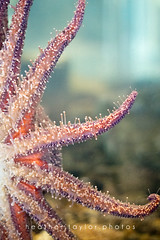
are the many small tubular projections found most famously on the oral face of a sea star's arms, but are characteristic of the water vascular system of the echinoderm phylum which also includes sea urchins, sand dollars and sea cucumbers and many other sea creatures.
|
|
|
Spines
|
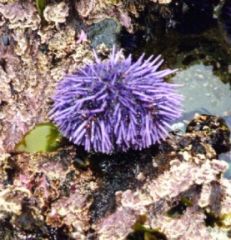
-hard, needle-like anatomical structure is composed mineralogically of a crystal of calcite
|
|
|
Radical Nerve
|
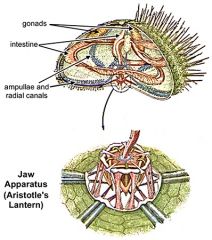
helps sea stars regenerate.
|
|
|
Pedicellariae
|

is a small wrench- or claw-shaped structure commonly found on Echinoderms, particularly in sea stars
|
|
|
Ossicles
|
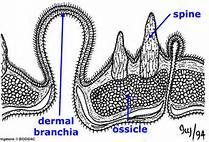
that form the hard element of the skeletal structure extend from the disc onto the arms in a continuous arrangement which gives the arms a broad base.
|
|
|
Ampulla
|
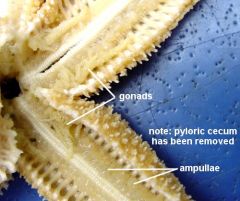
are bulb-shaped structures located above the tube feet of starfish and other echinoderms. are an important part of the water vascular system of starfish, which is the responsible for the animal's locomotion. The only function of the is to store the water that enters the vascular system and send it to the minuscule tube feet, located in the ventral side of the starfish's arms.
|
|
|
Brittle Star
|

Any of various marine organisms of the class Ophiuroidea, related to and resembling the starfish but having long slender arms
|
|
|
Sea Star
|

They typically have a central disc and five arms, though some species have many more arms than this. The aboral or upper surface may be smooth, granular or spiny, and is covered with overlapping plates. Many species are brightly coloured in various shades of red or orange, while others are blue, grey, brown, or drab. have tube feet operated by a hydraulic system and a mouth at the centre of the oral or lower surface.
|
|
|
Sea Cucumber
|
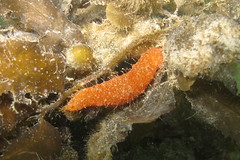
They are marine animals with a leathery skin and an elongated body containing a single, branched gonad. are found on the sea floor worldwide
|
|
|
Sea Urchin/ Sand Dollar
|
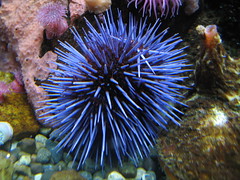
are small, spiny, globular animals which, with their close kin, such as sand dollars, constitute the class Echinoidea of the echinoderm phylum
|
|
|
Sea Lilies/ Feather Stars
|
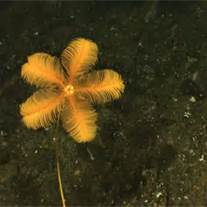
They live both in shallow water and in depths as great as 6,000 metersSea lilies refer to the crinoids which, in their adult form, are attached to the sea bottom by a stalk Feather stars ared referred to the unstalked forms.
Crinoids are characterized by a mouth on the top surface that is surrounded by feeding arms. They have a U-shaped gut, and their anus is located next to the mouth. Although the basic echinoderm pattern of fivefold symmetry can be recognized, most crinoids have many more than five arms. Crinoids usually have a stem used to attach themselves to a substrate, but many live attached only as juveniles and become free-swimming as adults. |
|
|
Ambulacrum
|
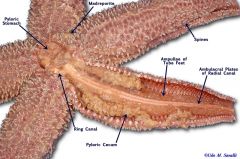
One of the five radial areas on the undersurface of the starfish
|
|
|
Aristotle's Latern
|
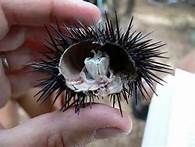
the jaw apparatus, which consists of five, strong jaws, each with one tooth, that form a structure shaped like a lantern inside the mouth. The teeth are used for scraping algae and other material from the surface on which the animal feeds.
|

